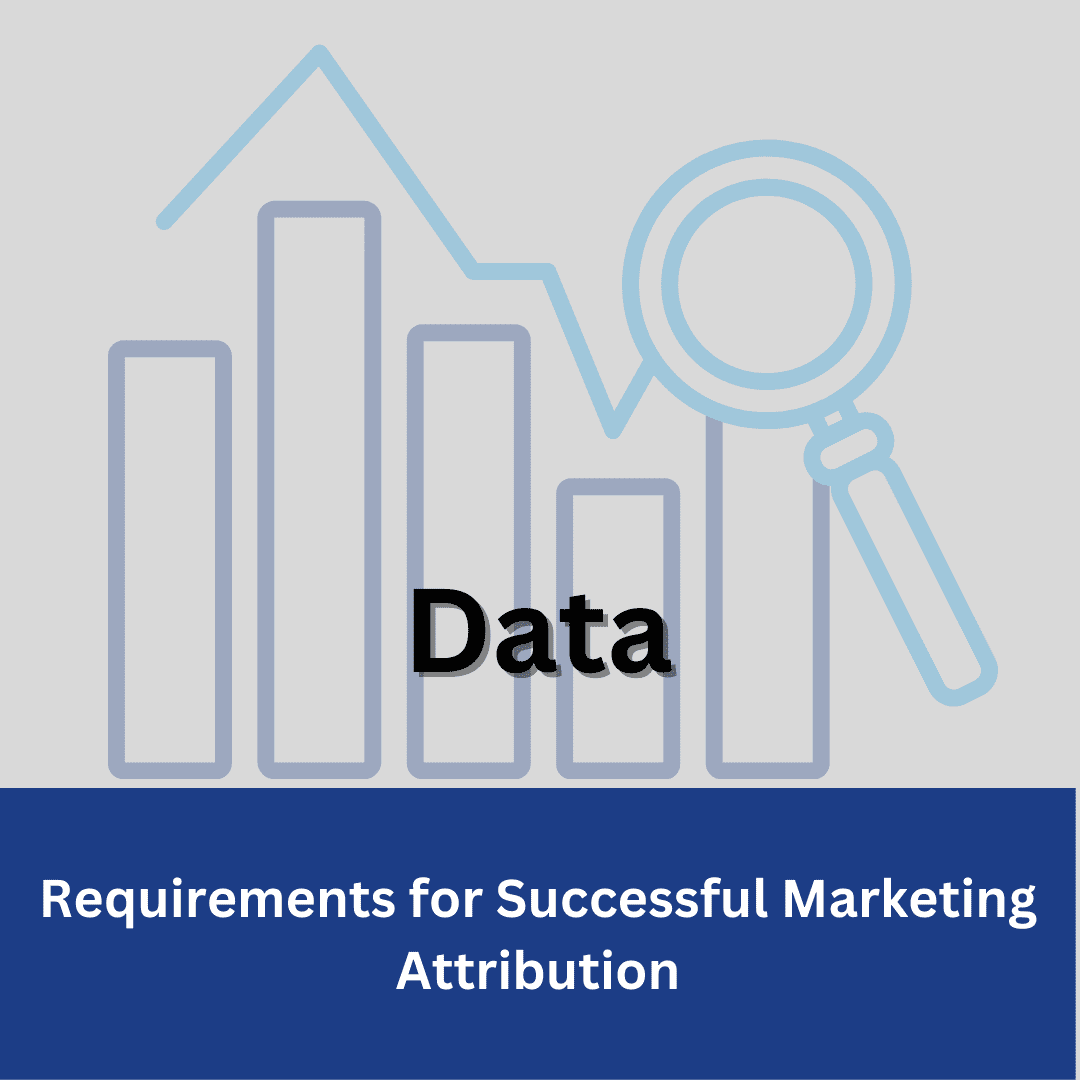Requirements for Successful Marketing Attribution: Data

By Brenna Lofquist, Senior Marketing Consultant / Client Services Operations at Heinz Marketing
I’m going to stick with the attribution theme (see my recent blog post) since it’s continued to be a popular topic in B2B Marketing.
In my previous post, I walked through the different attribution models. Once you have an idea of the model, you need to understand all the requirements to make it possible. Which is the inspiration for today’s post and the series that follows. Throughout my next few blog posts, I’ll focus on a specific requirement to successful track attribution. Today’s topic: Data
One thing to note, the following requirements are applicable with or without an attribution tool/platform. The requirements are really the foundation to be able to successfully report on attribution. The steps needed to take before you actually implement an attribution model or tool.
Data
This is a big one but I’ll break it down into a few sub sections. Data is key when it comes to attribution. If your data is messy, things get lost, or aren’t tracked properly, it’s going to be really difficult to trust your attribution reporting.
Lead sources
The first step is to ensure your sources are properly defined. I say properly because some organizations use lead sources in different ways. However, for attribution your sources should relate to the sources in which you can capture demand. You can use channels for lead sources (i.e., paid social) or you can categorize sources by intent (low versus high). Another way to think about how to define lead sources is by sales metrics and velocity. The dynamics usually vary quite significantly by source– for example, a high intent source is likely to close faster, therefore it wouldn’t make sense to lump a low intent source into the same category.
There’s no magic number to the amount of lead sources you should have, although I always recommend keeping it simple – you can always add more if need be.
Going back to properly defining lead sources, one thing you don’t want to do is to have your sources defined by the department or team that sourced the lead. I know there’s likely a need to track this, which is fine and I agree with but, it shouldn’t be done in the lead source field. Or at least it shouldn’t be done within the same field used to track sources and report on attribution.
Preserving original source
In my experience (and my opinion) you must be able to preserve the original source in which a lead entered your database to be able to accurately track attribution. At the very minimum, this should be a requirement if you want to track the first touch. This might sound like a no brainer to some but you’d be surprised at how many businesses aren’t doing this. If the lead source field used for attribution is being updated every time a lead interacts with one of your efforts, your attribution will be all over the place.
Now there’s a few ways to do this and it depends on what Marketing Automation Platform you are using. Ideally you want to have some kind of “original source” field where once populated, it can’t be changed. I recommend creating an “original source details” field to provide more information about the lead source. For example: original source = event, original source details = the date and name of the event. These fields would always need to stick together and be populated at the same time, never separately.
Next you’ll need to create another set of fields to track most recent source. This will be the field that’s updated and shows a leads history of what they’ve engaged with or taken action on.
Marketo has the ability to block field updates but other MAPs don’t (like Hubspot and Pardot) so you’ll need to create a workaround. The specifics on how to do so deserve it’s own post. If you are interested you can reach out to me (brenna@heinzmarketing.com) and I’m happy to share what we’ve done. In Marketo you’ll still need to implement automation to first check if the original source fields are empty. If so, have the system populate those fields. If they aren’t empty, the the most recent lead source fields will populate to build the leads history.
Tracking original source from lead to opportunity
You’ve done all this work to capture and preserve the original source, make sure it makes it through to the opportunity!
In most systems this can be automated based on the lead that converted. Once the opportunity is created, the source is pulled from the lead record and added to the opportunity source. When reporting on attribution you are going to do that at the opportunity level, making this very important.
And I’m sure there are other ways to do this. Most of my experience with attribution has been done in Salesforce, so that’s where this comes from. I’d be curious to know what others have done using different CRMs (let me know in the comments or reach out directly).
Collecting the data
Once you’ve defined lead sources, you need to ensure you’re able to or are collecting the necessary information to determine the lead source.
Forms would be one way to collect source data. You can use hidden UTM fields on the form and then standardize that information into your lead source field. Again, this might seem like a no brainer but, if you are using hidden UTM fields make sure you’re adding UTMs to URLs. You won’t get very far if you don’t.
Another way to collect data are list imports which most likely come from events or tradeshows.
Make sure you are adding the applicable lead source field and entering the appropriate values for the fields. I recommend creating a process doc (if you don’t have one already) that explains how to upload lists so it’s done properly and the data is consistent. This is especially important if your organization has multiple people uploading lists.
Similar to list uploads, there will be times where sales reps are prospecting and adding new contacts. They should be trained on the process and definitions of the lead sources, as well as have access to an internal resource doc.
This doesn’t cover the gamut of all ways to collect data. The main point here is to make sure that however you’re collecting data used for attribution that there’s:
- Alignment on the use of the fields and values
- Training and supporting reference/process documentation
- Consistency in the data
We’ve talked the first requirement/step to be able to track attribution successfully – woo! Look out for next months blog where I’ll discuss the second requirement …what could it be?
As mentioned in the post, you can reach out to me directly (brenna@heinzmarketing.com) if you’re curious about the original source workaround or to chat attribution in general. I’m always interested to hear how others are doing it!



